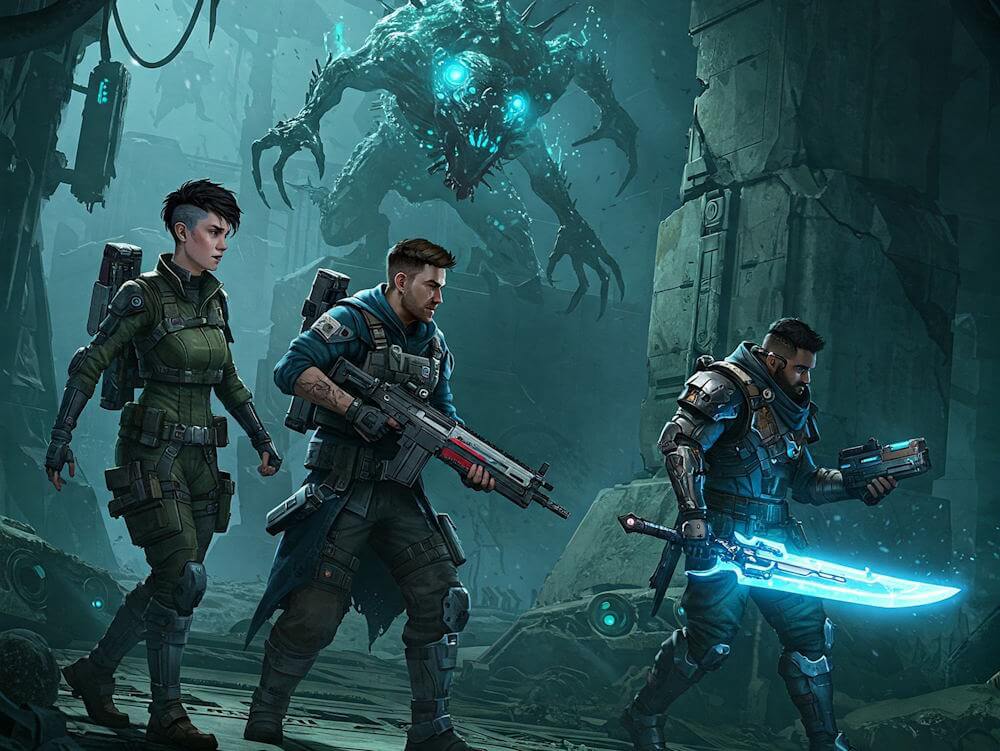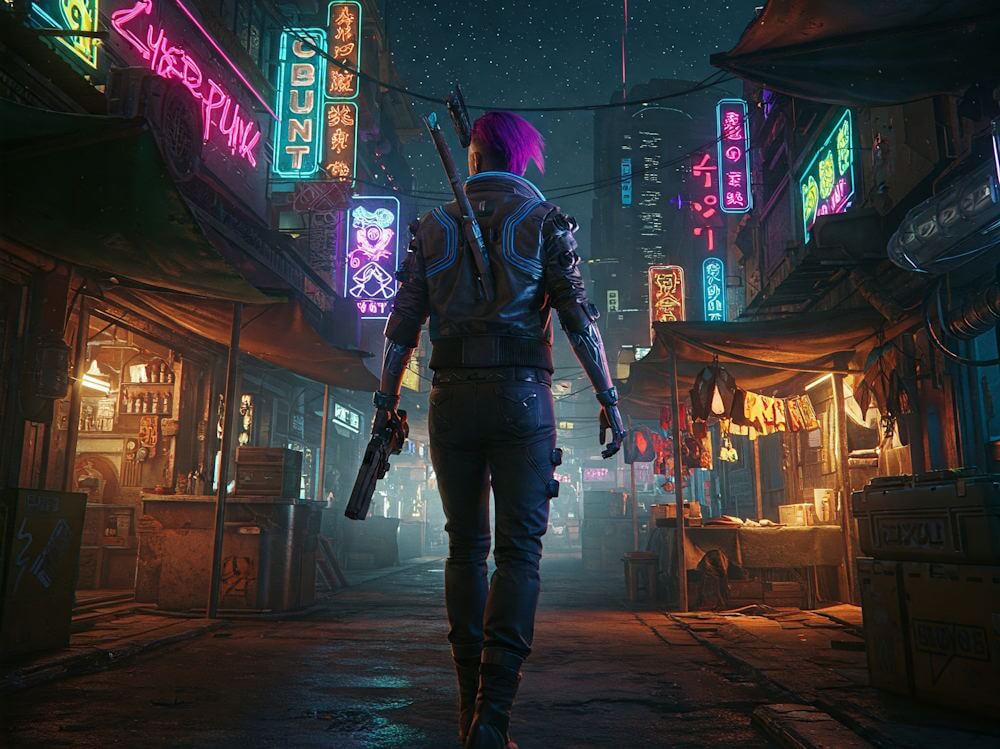Remnant II serves as the highly anticipated sequel to the acclaimed action-RPG, Remnant: From the Ashes. In this installment, players are once again thrust into a post-apocalyptic world filled with dangerous creatures and vibrant, yet haunting environments. The game’s innovative blend of gunplay, exploration, and RPG elements is further refined, offering both seasoned players and newcomers an exhilarating experience. With its signature co-op mechanics, Remnant II encourages teamwork and strategy, allowing players to tackle challenges together in a dynamic setting.
The narrative of Remnant II expands upon the rich lore established in its predecessor. Set against the backdrop of a world ravaged by interdimensional conflicts, players must contend with ominous forces that threaten humanity’s existence. The plot unfolds through a series of immersive quests and interactions with a diverse cast of characters, each contributing to the overall narrative. Themes of survival, resilience, and camaraderie are woven throughout, inviting players to dive deeper into the game’s intricate storyline.
What sets Remnant II apart in the crowded action-RPG landscape is its emphasis on procedural generation, offering a unique gameplay experience with every playthrough. The environments, enemies, and loot systems are dynamically generated, ensuring that no two adventures are ever the same. Additionally, the developers have listened to community feedback from the original title, which has resulted in improved gameplay mechanics and an expanded arsenal of weapons and abilities customized for varied playstyles.
Upon its initial release, Remnant II garnered significant attention and praise from both critics and players alike. This excitement reflects a growing interest in games that fuse the action-RPG genre with cooperative gameplay elements. As players explore this richly developed universe, they will discover a blend of chaos and strategy that might just cement Remnant II as a hidden gem in the gaming world.
Understanding Co-op Gameplay Dynamics
Remnant II places a significant emphasis on co-op gameplay, making it an enticing option for players seeking collaborative experiences. At its core, the game promotes teamwork, urging players to unite with friends or engage with random individuals online. This cooperative element is not merely a social aspect, but it fundamentally impacts the game’s mechanics and strategies. As players team up, they must combine their unique abilities, weapons, and tactics to overcome formidable foes and navigate the game’s intricately designed landscapes.
The cooperative structure encourages communication and coordination among players, where each member’s contributions can lead to success in challenging scenarios. The synergy between different character builds plays a crucial role, as players may specialize in damage dealing, support roles, or tanking capabilities. This diversity creates a dynamic environment where strategic planning becomes essential. By effectively coordinating their actions, players can tackle formidable enemies, utilize environmental advantages, and optimize their overall gameplay experience.
While the co-op aspect is a highlight, Remnant II also offers a compelling experience for solo players. Those who prefer to venture alone can still enjoy the game, albeit with a different strategy. Solo play necessitates a more measured approach, as players are required to adapt to ensure their survival in a world teeming with challenges. The game’s design allows for soloists to progress at their own pace, utilizing the various in-game systems to their advantage. While co-op gameplay may provide an edge in battles, skilled solo players can find ways to navigate the difficulties through meticulous planning and adaptability.
The balance between cooperative and solo gameplay in Remnant II provides an inclusive experience that caters to diverse playstyles. Regardless of how players choose to tackle the game, the experience remains engaging, ensuring that both co-op lovers and solo adventurers find their place within its rich gaming landscape.
The Role of Communication in Co-op Play
Effective communication is a cornerstone of any successful co-op gaming experience, particularly in a complex game like Remnant II. In this game, where players face formidable challenges together, the manner in which they communicate can significantly influence their overall performance and enjoyment. Various means of communication are available to players, including voice chat, text chat, and in-game signals, each playing a vital role in fostering teamwork and coordination.
Voice chat has become the most popular method for players to communicate in real-time. It allows for spontaneous discussions and immediate strategic adjustments, which can prove crucial during intense combat situations. When players utilize voice channels effectively, they can share vital information, such as enemy positions or the availability of resources, thereby enhancing their chances of success. For example, a player identifying a challenging enemy can alert teammates, facilitating a cohesive response that minimizes individual vulnerabilities.
Conversely, poor communication can lead to detrimental situations. Imagine a scenario where teammates engage different targets simultaneously without coordinating their actions, leading to confusion and quick defeats. In such instances, the absence of guidance can also lead to unutilized resources or failure to trigger critical game mechanics, ultimately resulting in a less satisfying experience.
In addition to verbal communication, in-game signals and markers hold significant importance in conveying information quickly without the need for extensive dialogue. These visual cues can indicate enemy locations, direct teammates to regroup, or highlight strategy shifts during gameplay. Using a combination of voice chat and in-game signals enhances the cooperative experience, allowing for seamless coordination and efficient navigation of the game’s intricacies.
Ultimately, the effectiveness of communication in Remnant II lays the groundwork for both team performance and player enjoyment. By understanding and implementing effective communication strategies, players can create a more engaging and enjoyable co-op experience, transforming potential chaos into a synchronized gaming collaboration.
Chaos: When Co-op Goes Awry
In the realm of cooperative gameplay, particularly in titles like Remnant II, players often grapple with an inherent propensity for chaos. The very foundation of cooperative gaming is predicated on collaboration; however, this can lead to unprecedented disarray when miscommunication or differing strategies come into play. One common pitfall arises when team members fail to synchronize their actions. For instance, a player charging into battle while another is quietly attempting a stealthy approach can lead to chaotic scenarios. Such mismatched tactics not only jeopardize the mission but can also lead to significant frustration among players.
Further complicating matters, players may have varying levels of experience or distinct play styles, which can create discord in cooperative scenarios. For instance, an experienced player may aim for trigger discipline and tactical maneuvers, while a novice may charge headlong into engagements, leading to unexpected outcomes. These discrepancies might culminate in moments where pure panic ensues, such as during an intense boss fight. Picture a scene where one player is frantically trying to revive their teammate while another inadvertently activates a deadly ability, resulting in a series of chaotic events that can leave all players bewildered. Such episodes can create memorable moments laden with laughter, highlighting that chaos does not always equate to failure.
These chaotic encounters often serve dual purposes. They can evoke tremendous frustration, particularly during critical missions where coordination is paramount. However, they can also foster camaraderie among players who find humor in their disjointed efforts. There is a unique charm in the unpredictability of cooperative play, where chaos can become a catalyst for shared experiences, whether they lead to achievement or comedic debacles. Thus, the interplay of strategy, communication, and differing play styles in Remnant II epitomizes the chaotic nature of co-op gameplay, revealing both its challenges and delights.
The Hidden Gems of Remnant II
Amidst the chaos often experienced in cooperative gameplay, Remnant II unveils a plethora of hidden gems that contribute to its charm. One of the most compelling aspects is the gameplay mechanics that seamlessly blend shooter elements with role-playing characteristics. Unlike many typical shooters, Remnant II encourages not just teamwork but a strategic approach that takes into account each player’s unique abilities and loadouts. This dynamic fosters a sense of camaraderie as players must synergize their strengths to tackle formidable enemies and intricate environments.
The environmental design in Remnant II is nothing short of remarkable. Each setting is intricately crafted, offering an array of stunning visuals and atmospheric details that enhance immersion. These environments serve not only as backdrops for intense battles but also as playgrounds for exploration. Players often encounter hidden paths, secret areas, and cleverly designed puzzles that reward curiosity and ingenuity. This design element transforms the game into an expansive world filled with engaging lore, compelling narrative threads, and interconnected realms that beckon players to delve deeper.
The loot system is another noteworthy feature that sets Remnant II apart from other titles in the genre. As players progress, they uncover a rich tapestry of weapons, gear, and crafting materials, each contributing to character advancement. The rewards are intricately tied to exploration; players are motivated to explore every nook and cranny, which not only enhances the gaming experience but also intensifies the feeling of accomplishment when rare items are discovered. Moreover, the satisfaction derived from overcoming tough bosses alongside friends creates lasting emotional highs, solidifying shared experiences and unexpected victories.
In sum, while chaos often shadows the cooperative experience in Remnant II, it is the carefully crafted gameplay elements, breathtaking environments, and rewarding exploration that unveil its true gems. These features collectively shape a captivating adventure, inviting players to embark on their epic quests together.
Character Progression and Customization
In Remnant II, character progression is a fundamental aspect that enhances gameplay complexity and enjoyment, particularly in co-op scenarios. Players have the opportunity to develop their characters through a robust skill tree system. This allows for strategic customization, where individuals can choose abilities that align with their preferred playstyle, be it offensive, defensive, or support-oriented. Each choice in the skill tree not only affects the character’s individual performance but also influences how they can synergize with teammates during cooperative play.
Equipment upgrades are another critical component of character progression in Remnant II. Players can enhance their weapons and armor, which impacts both their efficacy in combat and their visual identity. The game features a wide array of loot that can be found and equipped, further enabling players to tailor their characters to meet specific challenges. As players progress, they can unlock unique items that fit various roles within a team, promoting a balanced group dynamic. This variety empowers players to experiment with different builds and strategies, optimizing their co-op experiences.
Moreover, the synergy between co-op partners is pivotal to character development in Remnant II. When players understand each other’s character builds, they can complement one another, maximizing their collective strengths. For instance, a tank with high defensive capabilities can work alongside a damage dealer, enabling the latter to unleash powerful attacks without the immediate threat of retaliation. This collaborative approach to character customization fosters an environment where players can not only advance individually but also contribute to the success of the team. Ultimately, the character progression and customization system in Remnant II significantly enhance both the personal gaming experience and the overall cooperative dynamic.
Narrative and World-Building Elements
Remnant II captivates players not merely through its gameplay mechanics but also through its rich narrative and intricate world-building elements. This game unfolds its story primarily through environmental storytelling and in-game lore, allowing players to piece together a larger narrative tapestry as they explore its meticulously crafted environments. Each location, adorned with visual cues and scattered artifacts, serves as a narrative device that immerses players in the world, urging them to delve deeper into its mysteries.
In addition to environmental storytelling, the embedded lore throughout the game plays a pivotal role in enhancing the narrative experience. Players encounter various lore snippets through audio logs, text documents, and dialogue with non-playable characters, which contribute to a profound understanding of the world and its history. This multilayered approach to storytelling enables players to interpret the events and characters in personal ways, enriching their overall engagement with the narrative.
The co-op aspect of Remnant II further enriches the story experience. Cooperative play can influence the progression of the storyline, as players often share their findings and insights with one another, creating dynamic discussions around the unfolding narrative. The collaborative nature of the game allows for unique interactions among players, leading to diverse interpretations of the lore and story elements. Teamwork not only facilitates gameplay but also fosters a communal exploration of the game’s thematic depth.
Overall, the narrative and world-building in Remnant II serve to transform the player experience into something profound. As players uncover the layers of storytelling together, they forge connections not just with the game world but also with fellow players, ultimately contributing to a comprehensive gaming experience that transcends traditional gameplay.
Community Feedback and Player Experiences
The reception of Remnant II within the gaming community has been multifaceted, with players sharing a myriad of experiences that highlight both the strengths and weaknesses of the game. Social media platforms, gaming forums, and review sites have all contributed rich discussions that reflect the varied reactions players have had to the game’s co-op mechanics and gameplay elements.
Firstly, a prominent theme among players is the enjoyment derived from the cooperative gameplay experience. Many gamers have praised the seamless integration of co-op dynamics, emphasizing how the game’s design encourages collaboration and strategic planning among team members. Players often recount moments of intense battles where communication and coordination were crucial for survival, leading to a sense of camaraderie that enhances the overall experience. This aspect resonates particularly well with those who enjoy multiplayer interactions, as teamwork often yields a satisfying gameplay loop.
Overall, player feedback on Remnant II illustrates a vibrant community engaged with the game’s nuances. While many players celebrate the cooperative dynamics and immersive gameplay, there are constructive criticisms that developers may consider addressing. Such community engagement reveals the ongoing dialogue between gamers and developers, fostering an environment for continuous improvement and enhancing the game’s legacy.
Final Thoughts: Remnant II – A Co-op Experience Worth Having?
As we contemplate the multifaceted nature of Remnant II, it becomes imperative to assess whether this title truly embodies a chaotic journey or stands as an undiscovered treasure within the gaming community. Throughout this exploration, we have identified a blend of strengths and weaknesses that influence the overall gaming experience, particularly in its co-op mode, which is a significant aspect for many players.
On one hand, the strengths of Remnant II are pronounced. The game’s immersive world design and rich lore captivate players instantly. Moreover, the mechanics of cooperative gameplay foster a sense of interdependence among players, enhancing teamwork and strategy. Additionally, the diverse character customization options and deep weapon crafting system stand out, allowing players to tailor their experience to fit individual playstyles. This synergy is particularly rewarding in co-op modes, where groups can experiment with different builds to tackle challenges effectively.
Conversely, certain drawbacks persist and warrant recognition. Technical issues such as connectivity problems and occasional glitches can lead to frustration, detracting from what is otherwise a seamless co-op adventure. Some players might also find the difficulty spikes in gameplay overwhelming, which can be disconcerting, especially for those new to the genre. It is crucial for potential players to weigh these aspects carefully when deciding whether Remnant II aligns with their preferences.
In conclusion, while Remnant II may present its fair share of challenges, it ultimately offers a co-op experience that is rich, dynamic, and rewarding. For those inclined towards cooperative gameplay and engaging storytelling, the title presents itself as a hidden gem worth exploring. It encourages collaboration, creativity, and strategic gameplay, promising an adventure that can be both chaotic and gratifying. Thus, players looking for a fresh, immersive experience may find themselves well-compensated by diving into the world of Remnant II.



